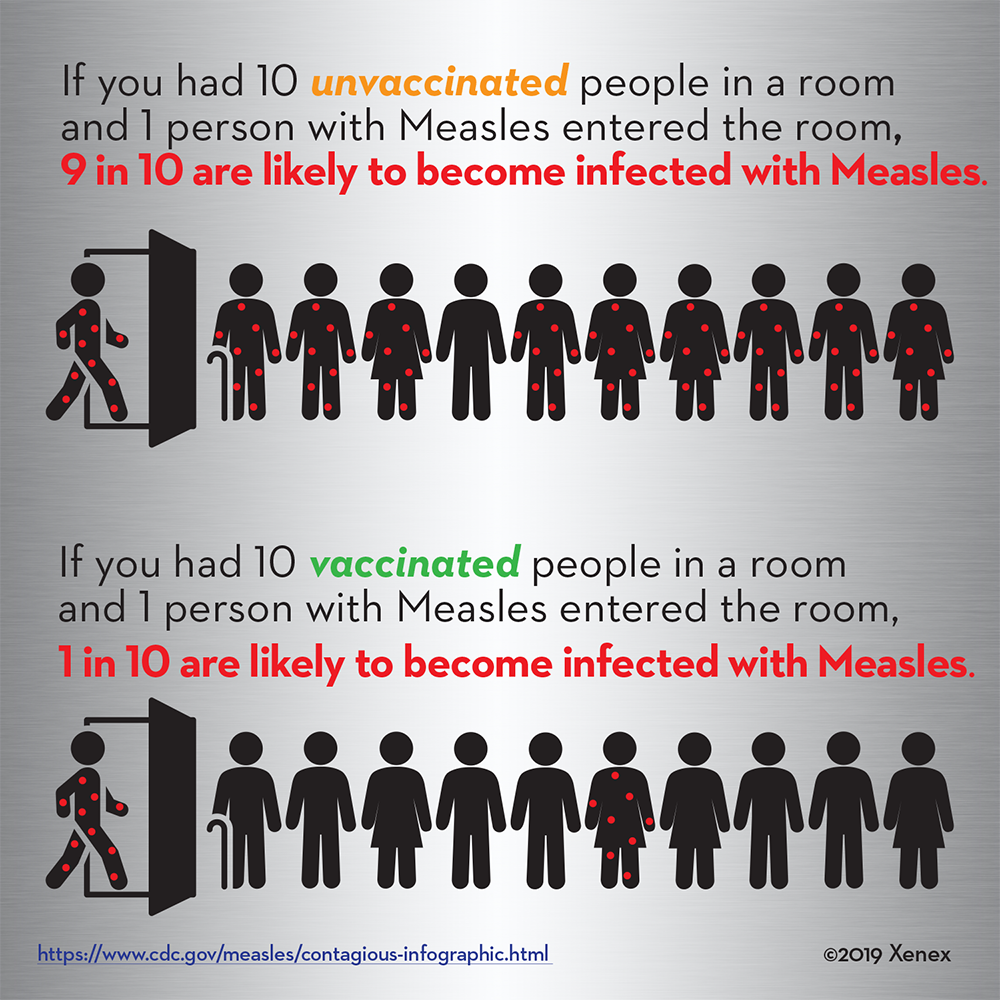
In today’s digital age, news breaks fast and so do a plethora of personal opinions. Sometimes we just don’t know what is factual or anecdotal. Everyone has their own opinion.
It has been over 300 years since Edward Jenner introduced the smallpox vaccine [1]. Globally, smallpox was eradicated — thanks to routine vaccination [2]. Since that first vaccine in 1798, the burden of infectious diseases has plummeted. Diseases such as rabies, typhoid, cholera, plague, diphtheria, yellow fever, polio, mumps, and tetanus are no longer a major public health threat [1,2]. Unfortunately, diseases such as measles, which were almost eradicated are making a comeback in communities with low vaccination rates [3].
Vaccines provide protection when there is a sufficient number of people vaccinated, i.e. herd immunity. The idea of herd immunity states that the spread of contagious diseases is curbed when a sufficiently high percentage of individuals within a population are immune to the disease, particularly through vaccination [3]. Research estimates that just a 5% decline in measles vaccine coverage could result in a 3-fold increase in measles cases and an additional $2 million in economic costs to the public sector [4]. Measles is a highly infectious viral disease that requires 90-95% vaccination coverage in order to achieve herd immunity [4]. Despite the lack of research evidence and plausibility of the link between the measles vaccine to neurobiological changes related to autism, the number of vaccine exemptions remains dangerously high [4,5]. The more recent outbreaks of measles in the United States is driven by cases imported from outside the country combined with pockets of communities with low vaccination coverage [5].
Research has shown that vaccines have an excellent return-on-investment of more than 16 times the cost [5]. The broader economic benefits of vaccines include saved lives, cases of illness avoided, and averted lost productivity due to illness. This is one reason why this year’s theme centers on vaccines being everybody’s business. Vaccines remain one of the most cost-effective public health interventions [5].
Please visit the APIC website for more resources and information on International Infection Prevention Week: https://professionals.site.apic.org/iipw/
References
Plotkin SL, Plotkin SA. A short history of vaccination. Vaccines. 2004;5:1-6.
Hajj Hussein I, Chams N, Chams S, El Sayegh S, Badran R, Raad M, Gerges-Geagea A, Leone A, Jurjus A. Vaccines through centuries: major cornerstones of global health. Frontiers in Public Health. 2015 Nov 26;3:269.
Lo NC, Hotez PJ. Public health and economic consequences of vaccine hesitancy for measles in the United States. JAMA Pediatrics. 2017 Sep 1;171(9):887-92.
Hotez PJ. Texas and its measles epidemics. PLoS Medicine. 2016 Oct 25;13(10):e1002153.
Ozawa S, Clark S, Portnoy A, Grewal S, Brenzel L, Walker DG. Return on investment from childhood immunization in low-and middle-income countries, 2011–20. Health Affairs. 2016 Feb 1;35(2):199-207.
–Author: Deborah Passey, PhD, Clinical Scientist, Xenex Disinfection Services

















